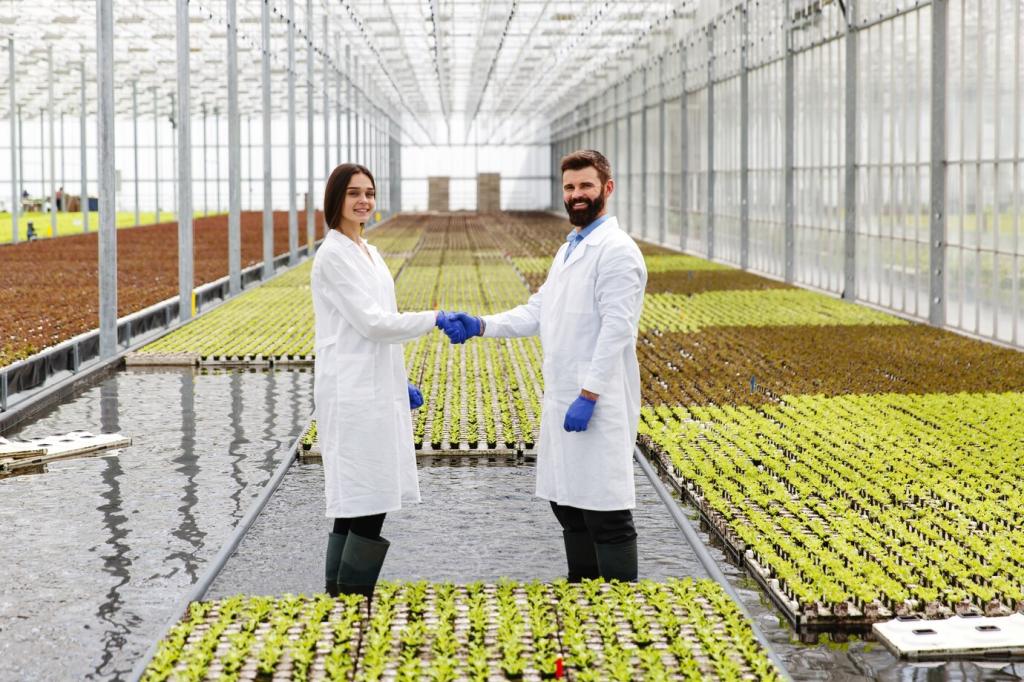Sustainability and Environmental Impact of Urban Vertical Farms
Urban vertical farms represent a transformative approach to food production in cities, promising fresh produce with a minimized ecological footprint. As populations grow and urbanize, traditional agriculture struggles to meet the increasing demand for food without exacerbating environmental degradation. Vertical farming brings agriculture indoors, stacking crops in climate-controlled environments that use advanced technology to optimize growing conditions. This web page explores the key aspects of sustainability and environmental impact associated with urban vertical farms, examining resource usage, ecological benefits, challenges, and future potential.
Energy Consumption and Efficiency
LED Lighting Innovations
Light-emitting diode (LED) technology has become integral to the operation of vertical farms, offering highly efficient and customizable lighting that can mimic the specific wavelengths of sunlight required for different plant species. The adaptation of LEDs not only reduces overall energy consumption compared to traditional lighting solutions but also enables farmers to tailor growth conditions for optimal yield. Recent innovations have produced LEDs with enhanced longevity and programmability, which further minimize energy waste. Despite their higher upfront cost, these systems ultimately contribute to the long-term sustainability of indoor agriculture by lowering operational expenses and environmental footprints.
Renewable Energy Integration
To reduce reliance on conventional, carbon-intensive energy sources, some vertical farms are integrating renewable energy solutions such as solar panels, wind turbines, and geothermal systems. The decentralized nature of vertical farms—often located within city limits—makes it possible to adopt localized green energy without the losses associated with long-distance transmission. This approach not only cuts greenhouse gas emissions but also stabilizes energy costs over time. By aligning plant growth cycles with periods of peak renewable energy generation, vertical farms can further optimize their operations. The continued evolution in battery and storage technology is anticipated to enhance the feasibility of full off-grid operations in the future.
Climate Control and Resource Optimization
Maintaining optimal environments for plant growth involves sophisticated climate control systems that regulate temperature, humidity, and air composition. Although these systems are necessary for maximizing harvests and preventing disease outbreaks, they typically consume significant amounts of energy. Advanced automation and smart sensors now enable precise management of these conditions, significantly reducing excess usage. Additionally, integrating data analytics allows for continual improvements, uncovering new efficiencies and reducing waste. When combined with energy-efficient hardware, these innovations transform energy use from a challenge into a competitive sustainability advantage for urban vertical farming.
Closed-Loop Irrigation Systems
At the heart of water conservation in vertical farming is the implementation of closed-loop irrigation systems. These systems capture, filter, and recirculate water used within the farming apparatus, minimizing waste and drastically reducing global water footprint. Unlike open-field irrigation, where a significant portion of water is lost to evaporation and runoff, closed-loop setups maintain nearly 95-99% of water within the system. This results in not only higher efficiency but also greater predictability in water usage, which is particularly valuable in regions vulnerable to drought or variable rainfall. By preventing the escape of nutrient-rich water, these systems also reduce the risk of nearby water source contamination, aligning with broader environmental goals.
Impact on Urban Water Infrastructure
The reduction in demand for municipal water resources by vertical farms presents tangible benefits for urban infrastructure. Traditional agriculture often places significant strain on city water supplies, especially in densely populated areas. Vertical farming’s efficient usage means less competition for potable water and decreases the burden on wastewater treatment facilities. Furthermore, as these farms are often located on or near the sites of consumption, they facilitate direct integration with greywater recycling and rainwater harvesting strategies tailored to local conditions. This synergy can help cities better meet water conservation targets and adapt to the increasing impact of climate change on supply patterns.

Previous slide
Next slide
Join our mailing list
